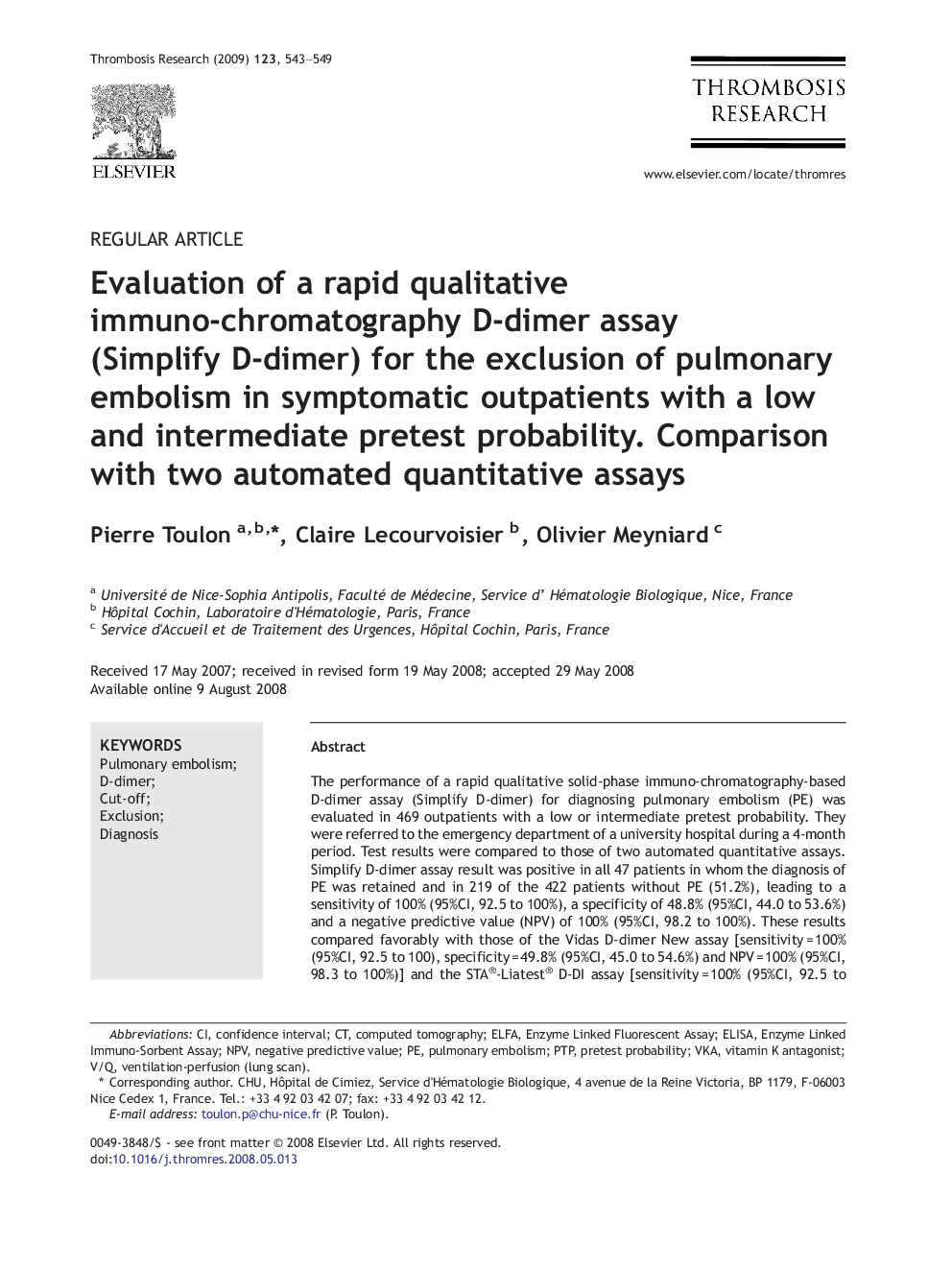| کد مقاله | کد نشریه | سال انتشار | مقاله انگلیسی | نسخه تمام متن |
|---|---|---|---|---|
| 3029576 | 1183090 | 2009 | 7 صفحه PDF | دانلود رایگان |

The performance of a rapid qualitative solid-phase immuno-chromatography-based D-dimer assay (Simplify D-dimer) for diagnosing pulmonary embolism (PE) was evaluated in 469 outpatients with a low or intermediate pretest probability. They were referred to the emergency department of a university hospital during a 4-month period. Test results were compared to those of two automated quantitative assays. Simplify D-dimer assay result was positive in all 47 patients in whom the diagnosis of PE was retained and in 219 of the 422 patients without PE (51.2%), leading to a sensitivity of 100% (95%CI, 92.5 to 100%), a specificity of 48.8% (95%CI, 44.0 to 53.6%) and a negative predictive value (NPV) of 100% (95%CI, 98.2 to 100%). These results compared favorably with those of the Vidas D-dimer New assay [sensitivity = 100% (95%CI, 92.5 to 100), specificity = 49.8% (95%CI, 45.0 to 54.6%) and NPV = 100% (95%CI, 98.3 to 100%)] and the STA®-Liatest® D-DI assay [sensitivity = 100% (95%CI, 92.5 to 100%), specificity = 48.1% (95%CI, 43.3 to 52.9%) and NPV = 100% (95%CI, 98.2 to 100%)]. The inter-observer (n = 2) variability was very good with 1.7% discordant readings and a kappa coefficient (K) value = 0.97 (95%CI, 0.93 to 1.00). In conclusion, the Simplify D-dimer assay could be a valuable tool for ruling out PE in out-patients but a specific learning course of those having to work with is required in order to minimize the number of ambiguous reading and to overcome the inter-observer variability.
Journal: Thrombosis Research - Volume 123, Issue 3, January 2009, Pages 543–549